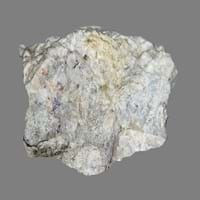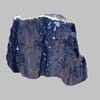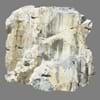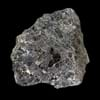Tuff and Skarn
Definition
Definition
Tuff is a type of rock made of volcanic ash ejected from a vent during a volcanic eruption
Skarns are formed during regional or contact metamorphism and from a variety of metasomatic processes involving fluids of magmatic, metamorphic, and/or marine origin
History
Origin
Italy
USA, Australia
Discoverer
Unknown
Tornebohm
Etymology
From a Latin word tophous then in Italian tufo and finally tuff
From an old Swedish mining term originally used to describe a type of silicate gangue or waste rock.
Class
Igneous Rocks
Metamorphic Rocks
Sub-Class
Durable Rock, Medium Hardness Rock
Durable Rock, Hard Rock
Family
Group
Volcanic
Not Applicable
Other Categories
Fine Grained Rock, Opaque Rock
Fine Grained Rock, Opaque Rock
Texture
Texture
Clastic, Pyroclastic
Earthy, Mud-rich, Rough
Color
Brown, Grey, Yellow
Black, Brown, Colourless, Green, Grey, White
Maintenance
More
Less
Durability
Durable
Durable
Water Resistant
Yes
Yes
Scratch Resistant
Yes
Yes
Stain Resistant
No
No
Wind Resistant
No
Yes
Acid Resistant
No
Yes
Appearance
Dull, Vesicular and Foilated
Dull
Uses
Architecture
Interior Uses
Decorative Aggregates, Entryways, Flooring, Homes, Interior Decoration
Decorative Aggregates, Entryways, Interior Decoration
Exterior Uses
As Building Stone, As Facing Stone, Garden Decoration, Office Buildings, Paving Stone
As Building Stone, As Facing Stone, Garden Decoration, Paving Stone
Other Architectural Uses
Curbing
Curbing
Industry
Construction Industry
Building houses or walls, Construction Aggregate
As a Flux in the Production of Steel and Pig Iron, As a Sintering Agent in Steel Industry to process Iron Ore, As Dimension Stone, Gold and Silver production, Manufacture of Magnesium and Dolomite Refractories
Medical Industry
Not Yet Used
Not Applicable
Antiquity Uses
Artifacts, Monuments, Sculpture, Small Figurines
Artifacts, Monuments, Sculpture
Other Uses
Commercial Uses
Creating Artwork
Creating Artwork, Gemstone, Jewelry, Metallurgical Flux, Source of Magnesia (MgO)
Types
Types
Welded tuff, Rhyolitic tuff, Basaltic tuff, Trachyte tuff, Andesitic tuff and Ignimbrite.
Endoskarns
Features
Always found as volcanic pipes over deep continental crust
Host Rock for Lead, Zinc and Copper Deposits
Archaeological Significance
Monuments
Used
Used
Famous Monuments
Easter Island in the Polynesian Triangle, Pacific Ocean
Data Not Available
Sculpture
Used
Used
Famous Sculptures
Data Not Available
Data Not Available
Pictographs
Used
Not Used
Petroglyphs
Used
Not Used
Figurines
Used
Used
Fossils
Absent
Absent
Formation
Formation
Tuff is formed when large masses of ash and sand which are mixed with hot gases are ejected by a volcano and avalanche rapidly down its slopes.
Due to change in environmental conditions, rocks are heated and pressurized deep inside the Earth's surface. Skarn is formed from the extreme heat caused by magma or by the intense collisions and friction of tectonic plates.
Composition
Mineral Content
Calcite, Chlorite
Calcite, Enstatite, Epidote, Garnet, Magnetite, Pyroxene, Titanite
Compound Content
Hydrogen Sulfide, Sulfur Dioxide
Au, CaO, Carbon Dioxide, Cu, Fe, MgO
Transformation
Metamorphism
Yes
Yes
Types of Metamorphism
Burial Metamorphism, Cataclastic Metamorphism, Contact Metamorphism, Hydrothermal Metamorphism, Impact Metamorphism, Regional Metamorphism
Burial Metamorphism, Cataclastic Metamorphism, Contact Metamorphism, Hydrothermal Metamorphism, Impact Metamorphism, Regional Metamorphism
Weathering
Yes
No
Types of Weathering
Biological Weathering, Chemical Weathering, Mechanical Weathering
Not Applicable
Erosion
Yes
No
Types of Erosion
Chemical Erosion, Coastal Erosion, Glacier Erosion, Sea Erosion, Water Erosion, Wind Erosion
Not Applicable
Properties
Physical Properties
Hardness
4-6
6.5
Grain Size
Fine Grained
Fine Grained
Fracture
Uneven
Irregular
Streak
White
Light to dark brown
Porosity
Highly Porous
Less Porous
Luster
Vitreous to Dull
Waxy and Dull
Compressive Strength
243.80 N/mm2
5
Not Available
Cleavage
Not Available
Slaty
Toughness
Not Available
2.4
Specific Gravity
2.73
2.86
Transparency
Opaque
Opaque
Density
1-1.8 g/cm3
2.8-2.9 g/cm3
Thermal Properties
Specific Heat Capacity
0.20 kJ/Kg K
25
0.92 kJ/Kg K
10
Resistance
Heat Resistant, Impact Resistant, Pressure Resistant, Wear Resistant
Heat Resistant
Reserves
Deposits in Eastern Continents
Asia
Afghanistan, Armenia, Azerbaijan, Burma, Cambodia, China, India, Indonesia, Iran, Japan, Malaysia, Mongolia, Nepal, North Korea, Pakistan, Saudi Arabia, Syria, Taiwan, Thailand, Turkey, Vietnam, Yemen
China, India, Russia, Saudi Arabia, South Korea, Sri Lanka
Africa
Cameroon, Cape Verde, Eritrea, Ethiopia, Kenya, Libya, Madagascar, Nigeria, Rwanda, South Africa, Sudan, Uganda
South Africa, Western Africa
Europe
France, Georgia, Germany, Greece, Iceland, Italy, Netherlands, Poland, Portugal, Spain, United Kingdom
United Kingdom
Others
Antarctica, Hawaii Islands
Not Yet Found
Deposits in Western Continents
North America
Canada, Costa Rica, Panama, USA
Canada
South America
Argentina, Bolivia, Brazil, Chile, Ecuador, Paraguay
Brazil, Colombia, Paraguay
Deposits in Oceania Continent
Australia
Central Australia, Western Australia
Central Australia, Western Australia
All about Tuff and Skarn Properties
Know all about Tuff and Skarn properties here. All properties of rocks are important as they define the type of rock and its application. Tuff belongs to Igneous Rocks while Skarn belongs to Metamorphic Rocks.Texture of Tuff is Clastic, Pyroclastic whereas that of Skarn is Earthy, Mud-rich, Rough. Tuff appears Dull, Vesicular and Foilated and Skarn appears Dull. The luster of Tuff is vitreous to dull while that of Skarn is waxy and dull. Tuff is available in brown, grey, yellow colors whereas Skarn is available in black, brown, colourless, green, grey, white colors. The commercial uses of Tuff are creating artwork and that of Skarn are creating artwork, gemstone, jewelry, metallurgical flux, source of magnesia (mgo).
|
||
|
||
|










